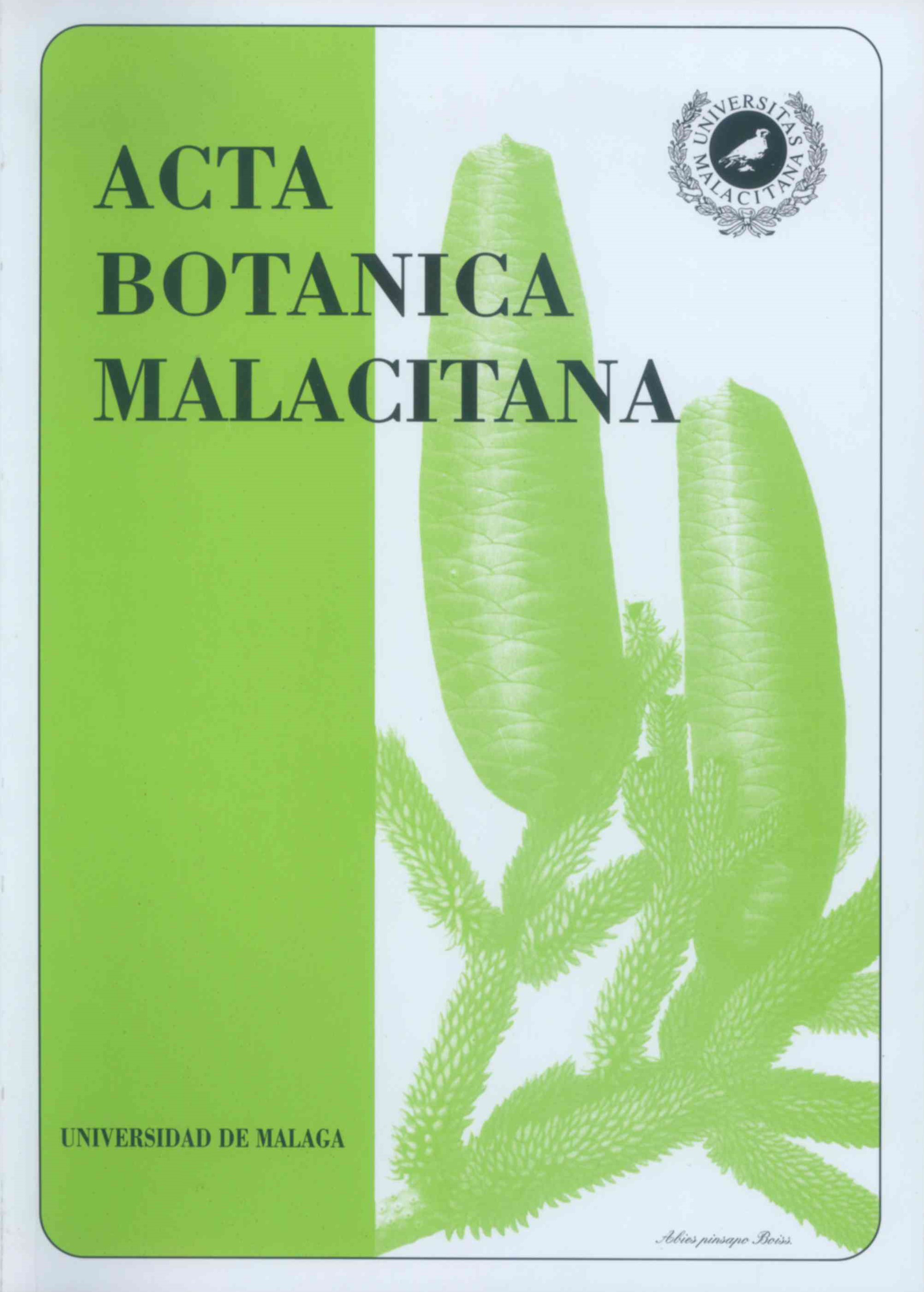Pollen analysis of honeys in the Cabrera Baja (Montes de Leon, Spain)
DOI:
https://doi.org/10.24310/abm.v20i.8830Keywords:
Melisopalynology, honey, León, Spain, beekeeping, pollen, palynology, Apis melliferaAbstract
Seven honey sample have been studied by light and scanning electron microscopy, from seven localities of the Montes de León region (Leon, Spain). The results show that the nectar from flowers is the main source in the region (HDE/P = 0.02-0.38) Thirty four pollen types have been identified which show two monofloral (from Chestnut and one from Mint) and four multifloral honey. The main types are different species of Mentha, Castanea sativa, Erica australis, E. arborea, Campanula spp., Reseda spp., Rubus spp., and Salix spp. like the most important plants supplying nectar for Apis mellifera. All these taxa, but mainly different species of tribu Genisteae, are the principal pollen sources in the region.
Downloads
Metrics
References
AIRA, M.J., P. RAMIL-REGO y M.P. SAA-OTERO -1990- Identificación polínica de Ericaceas en mieles gallegas. Acta Bot. Malacitana, 15: 27-32
CABERO, V. -1980- Espacio agrario y economía de subsistencia en las montañas Galaico- Leonesas: La Cabrera. Universidad de Salamanca. Serie Varia. Temas científicos y literarios, 29. Institución «Fray Bernardino de Sahaglin» C.S.I.C.- León.
CRANE, E. -1979- Honey. A comprehensive Survey. Heinemann. pp. 256-257. London.
ERDTMAN, G. -1960- The acetolysis method. A revised description. Svensk. Bot. Tidskr., 54(4): 561-564.
ERNOS, V. -1.980- Hay dinero y salud en la abeja. Ed. Sintes. pp. 40-41. Hospitalet.
GUILLÉN, A. -1990- Estudio de la flora de interés apícola de la provincia de Zamora. Diputación de Zamora. Zamora.
JANEIRO, B., J. AMIGO y M.J. AIRA -1992- Estudio polínico secuencial de la miel de Paradapiñol (Quiroga, Lugo, España) y su relación con la flora melífera de la zona. Bol. R. Soc.Esp. Hist. Nat. (Sect. Biol.) 88(1-4): 213-221.
LOUVEAUX, J.A., A. MAURIZIO & G. VORWOHL -1978- Methods of melissopalynology. Bee World, 59: 139-157.
MAURIZIO, A. -1979- Microscopy of honey. In E. CRANE (ed.) Honey. A comprehensive survey. Heinemann. London. 240-257.
RABINOWITCH, H.D., A. FAHN, T. MEIR & Y. LENSKY -1993- Flower and nectar attributes of pepper (Capsicum annuum L.) plants in relation to their attractiveness to honeybees (Apis mellifera L.) Ann. Appl. Biol., 123: 221-232.
SÁNCHEZ, C. y C. SAENZ -1982- Análisis polínico de mieles de Pontevedra (España). Lazaroa, 4: 253-268.
SÁNCHEZ SÁNCHEZ, J. -1982- Análisis polínico de mieles de la provincia de Salamanca. Universidad de Salamanca. Salamanca.
VALDÉS, B., M.J. DÍEZ & I. FERNÁNDEZ -1987- Atlas polínico de Andalucía Occidental. Inst. Des. Regional y Diputación de Cádiz. Sevilla.
VALENCIA-BARRERA, R.M. -1992- Estudio palinológico de mieles de la provincia de León. Tesis doctoral, microficha n° 93. Universidad de León. León.
VERGERON, Ph. -1964- Interpretation statistique des résultats en matiére d'analyse pollinique des miels. Ann. Abeille, 7(4): 349-364.
VIEITEZ, E. -1950- Palynological observations on some Spanish honeys. Bull. Torrey Bot. Club, 77(6): 495-502.
Downloads
Published
How to Cite
Issue
Section
License
All information related to the licensing of published works in Acta Botanica Malacitana and copyright can be found in our Editorial Policy.







1.png)
